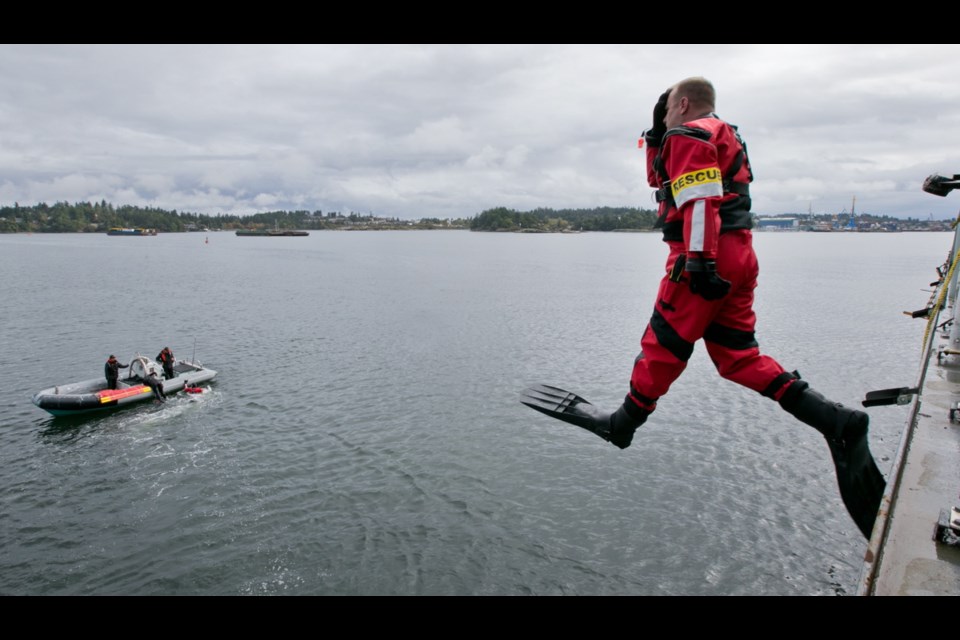A simulated submarine disaster called Smashex saw hundreds of people — including the crew of HMCS Calgary and Island Health emergency doctors — hauling and healing the wounded on Wednesday.
The navy-organized drill, held to practise submarine search and rescue, started in waters off Colwood when a submarine failed to respond to radio communication.
Before long, people were bobbing around Esquimalt Harbour in immersion survival suits — playing the part of a crew that escaped a sinking submarine “in the unlikelihood of a sub incident,” said Lt. Paul Pendergast, a navy public affairs officer.
Divers leapt off Calgary into the water and then into waiting zodiacs to pluck the crew out of the water and transfer them onto Calgary.
After navy medical staff conducted the initial treatment, the drill shifted to Victoria General Hospital in View Royal. All 59 people pulled out of the water — including 18 survivors — were transported by B.C. Ambulance to the hospital.
Preparations for casualties begin as soon as the hospital receives word of a disaster, prompting a Code Orange response. Even before patients arrived Wednesday, unit managers representing logistics, planning, finance and operations mustered.
They quickly assessed the number of patients who could be discharged or moved — making space available for up to 173 new arrivals.
Once at the hospital, patients were triaged in 30 seconds as opposed to the regular two to five minutes.
Internationally recognized triage cards used in a disaster — identifying people as dead (headed for morgue), minor (walking wounded), immediate (life-threatening injuries) and delayed (non-life-threatening) — were given to patients before they rolled into trauma rooms where nurses, lab technicians, respiratory therapists, medical imaging personnel and support staff waited.
For Island Health, the drill was an opportunity to practise its disaster response.
And unlike earlier exercises — this was the second one this year — the hospital got to deal with live people this time around.
“We’ve seen recently how places can rapidly get overwhelmed by disasters, so it’s important we prepare for it,” said Dr. Brian Farell, vice-chief of emergency for the South Island.
Wednesday’s exercise exposed some communication glitches and the need to update phone lists, Farell said.
Island Health’s Dr. Chris Morrow, chief of emergency, said organization and communication and safely moving or discharging patients already in the emergency department and hospital are a key focus.
“We’ve already learned lots of things,” Morrow said.
“There’s always things you can improve on and remember; protocols and things you have to buff up.”
The unknown factor that could not be accurately simulated Wednesday — the concern in the back of doctors’ minds — is the human resources that will be available when disaster strikes.
“We just worry about having enough resources — enough people available — and enough physical resources to help everybody,” Morrow said.



